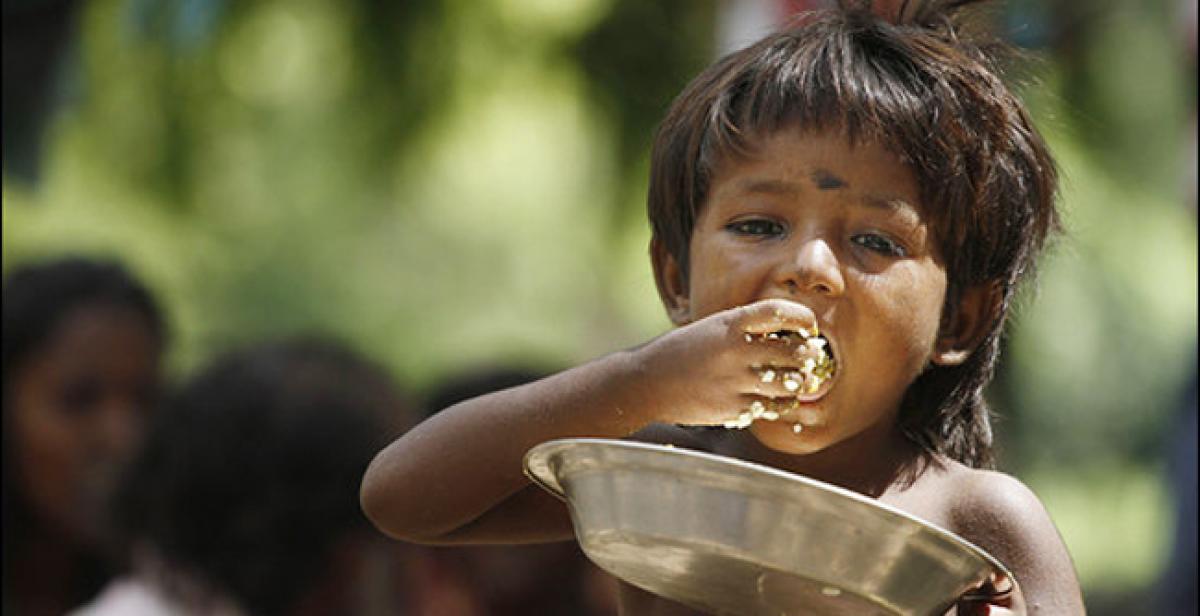Long road ahead to ending hunger malnutrition

According to the latest estimates of the Food and Agriculture Organisation FAO, the proportion of population that is undernourished in SubSaharan Africa increased from 208 per cent in 2015 to 227 per cent in 2016 and in Southeast Asia, it increased from 94 per cent in 2015 to 115 per cent in 2016
The UN Sustainable Development Goals (SDGs) incorporate zero hunger as one of the 17 targets to be achieved by 2030 for a sustainable future. The criticality of this goal lies in the fact that removing hunger -- and malnutrition -- from the world is intertwined with the other goals such as ending poverty, providing universal quality education and promoting lifelong learning, sustainable economic growth and employment, good health and well-being.
Any failure to achieve the zero hunger target by 2030 will result in the other SDGs not being fulfilled and impede social progress in the world.
Looking at the progress the world has made so far on eradicating hunger, there has been a global decline in the number of undernourished people from 900 million in 2000 to 775 million in 2013, rising to 777 million in 2015 and estimated to have increased to 815 million in 2016. This recent increase is largely due to the deterioration in the prevalence of undernourishment in Sub-Saharan Africa and Southeast Asia.
According to the latest estimates of the Food and Agriculture Organisation (FAO), the proportion of population that is undernourished in Sub-Saharan Africa increased from 20.8 per cent in 2015 to 22.7 per cent in 2016; and in Southeast Asia, it increased from 9.4 per cent in 2015 to 11.5 per cent in 2016.
In terms of the number of undernourished people, Sub-Saharan Africa has 224 millione, accounting for 25 percent of 815 million undernourished population of the world. On the other side, Southeast Asia has nearly 74 million undernourished people, accounting for about 9 per cent of the total undernourished population of the world (FAO, 2017).
Other sub-regions of Asia, for instance, East and South Asia, together account for nearly 51 per cent of the total world population of the undernourished. While, owing to the large population size, there is a predominance of the undernourished people in these regions, the countries here have also shown an improvement in their food security status which has decreased the number of undernourished people from 178.4 million in 2010 to an estimate of 145.5 million in 2016 in East Asia, and from 271.4 million in 2010 to 266.8 million in 2016 in South Asia (FAO, 2017).
While strong economic growth and low and stable inflation have resulted in increased food security in East and South Asia, and has, consequently, led to a decline in the extent of undernourishment in these regions, factors such as climate-related supply shocks and conflicts and violence -- and sometimes a combination of the two phenomenon -- have affected regions like Sub-Saharan Africa and Southeast Asia, and have worsened the food security in these regions in recent years.
Countries in Sub-Saharan Africa which have been affected by adverse weather conditions linked to El Niño, along with the increased number of violent conflicts, face rising food insecurity from disrupted food production and, consequently, increasing levels of undernourishment of its people.
The devastating effects of conflicts have been severe in countries such as Nigeria, South Sudan and Somalia, where 15.8 million people face severe food insecurity. In addition to the detrimental effect conflicts have on the severity of food insecurity, there is a growing concern in these countries on the conflicts which are triggered by the presence of food insecurity and malnutrition.
Though the target of zero hunger doesn't seem unachievable, there is a long road which leads to it. Addressing the concerns of distraught farmers affected by adverse weather conditions or by providing assistance to the population affected by conflicts, is very critical for achieving food and nutrition security.
The returns on the investment in transforming the agricultural sector and in social protection systems is definitely greater than being trapped in the vicious circle of food insecurity and conflicts. While a strong economic growth potential is necessary for lowering the prevalence of undernourished in the East Asia and South Asia sub-regions, solutions for weather-related externalities and conflicts are also necessary for achieving zero hunger in the world.
(Amit Kapoor is chair, Institute for Competitiveness, India. The views expressed are personal. He can be contacted at [email protected] and tweets @kautiliya. Deepti Mathur, senior researcher at large with Institute for Competitiveness has contributed to the article)














